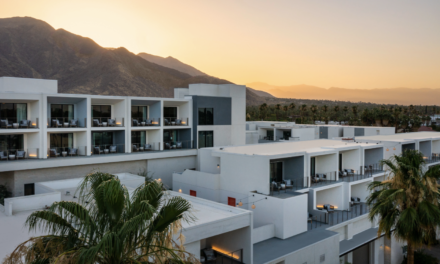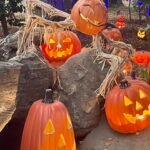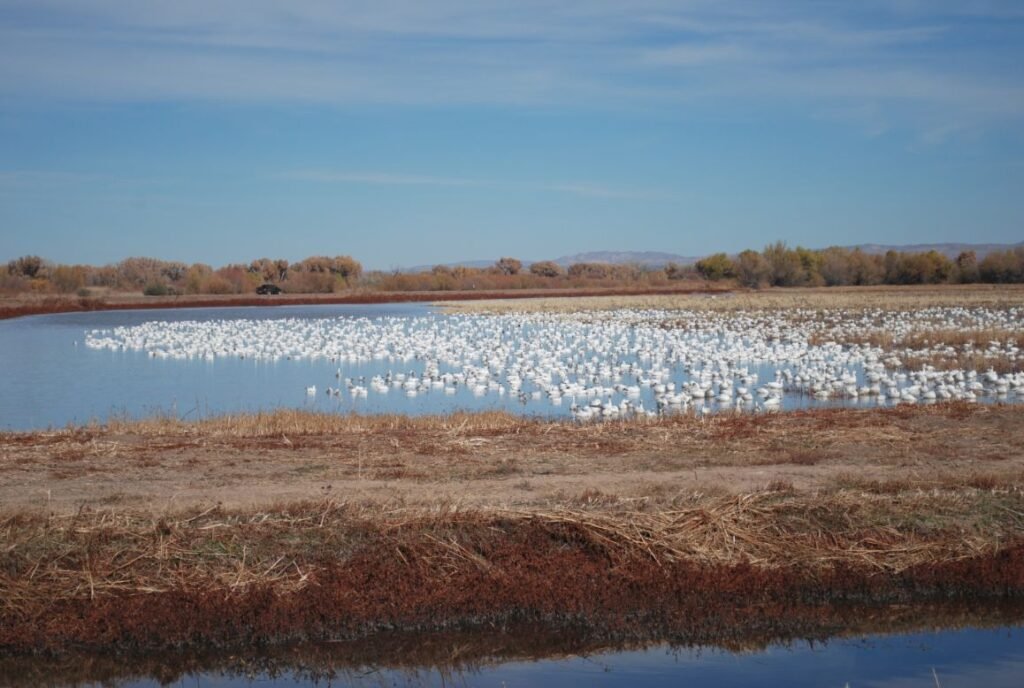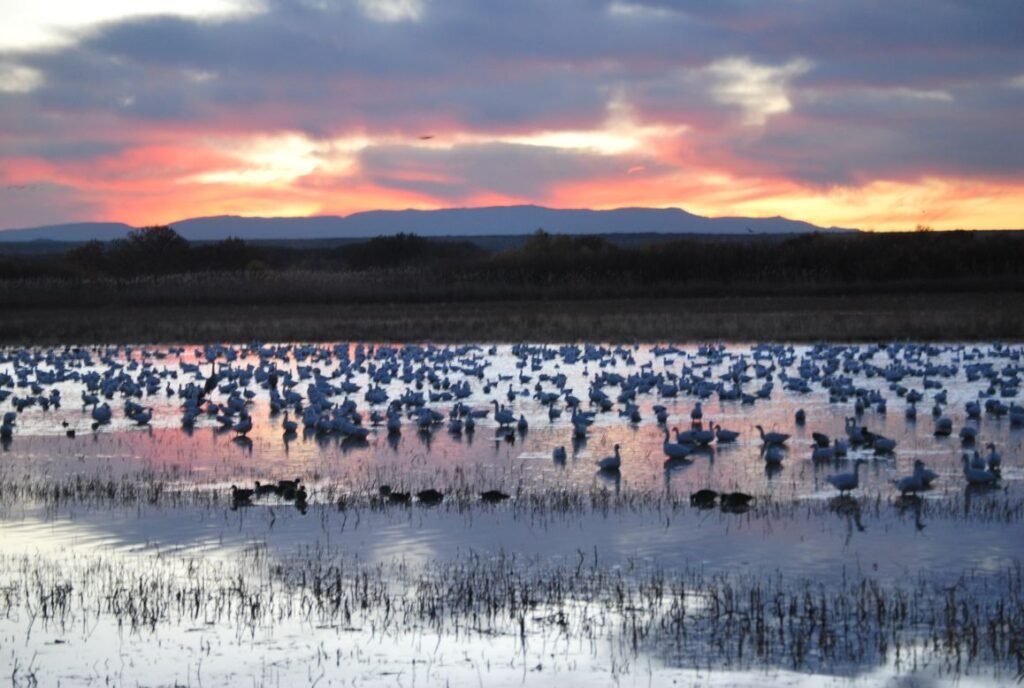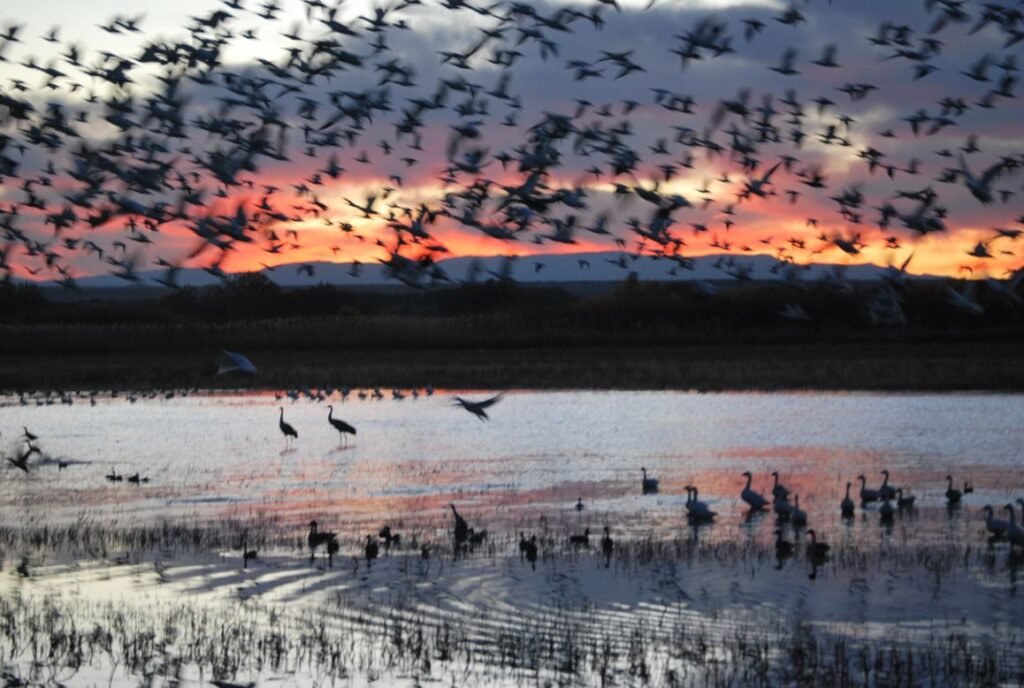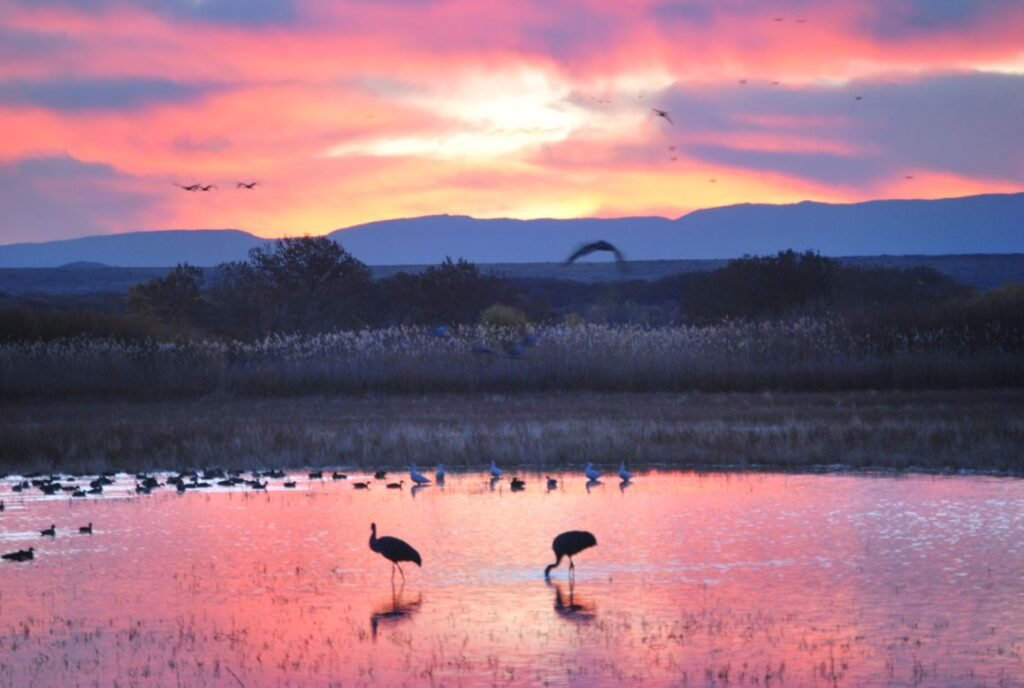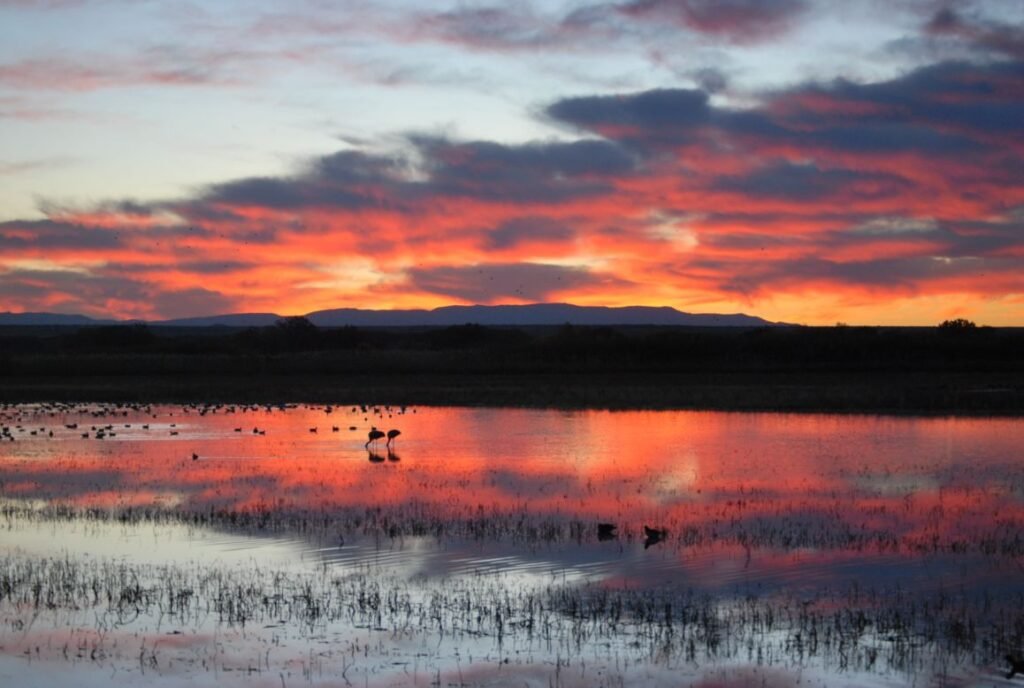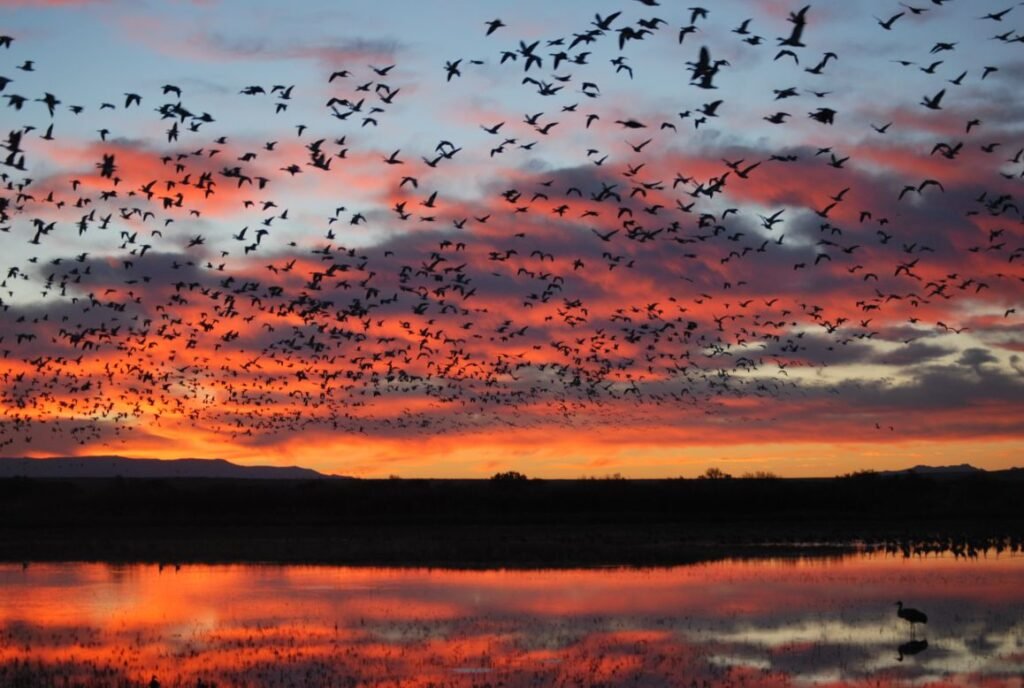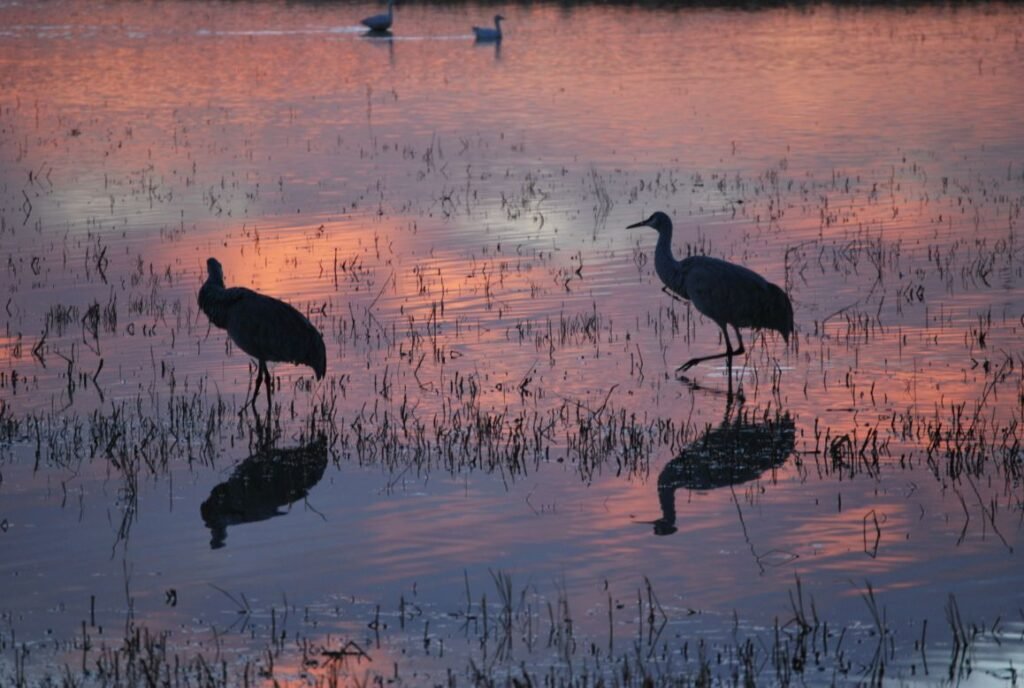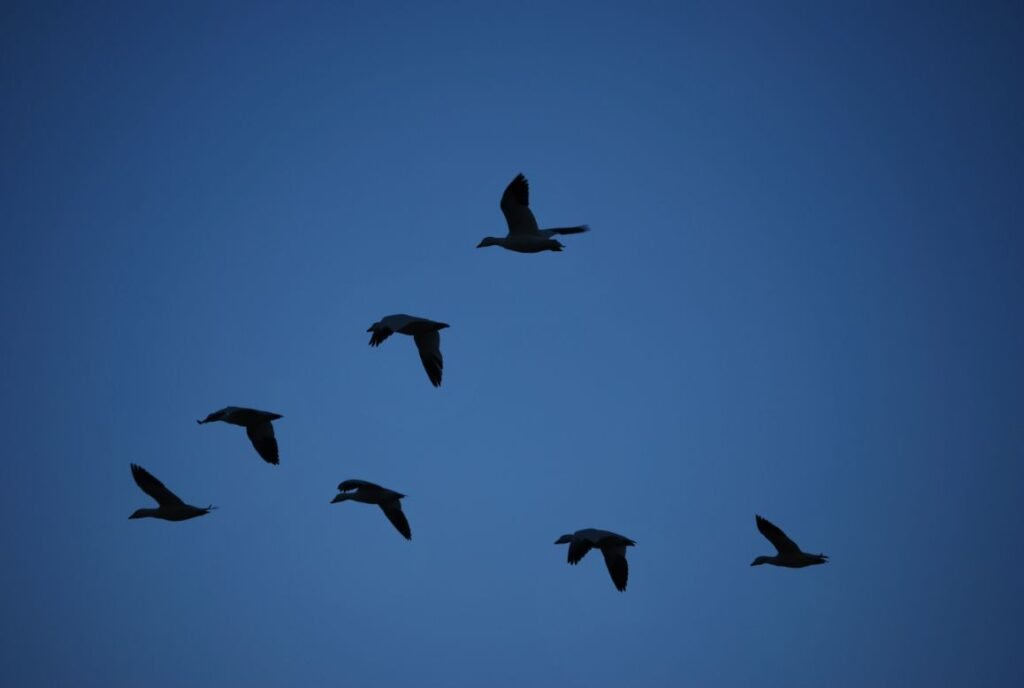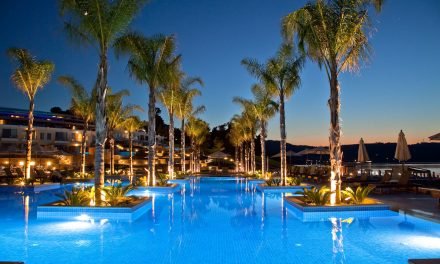
Experience a winter pageantry of waterfowl at the Bosque
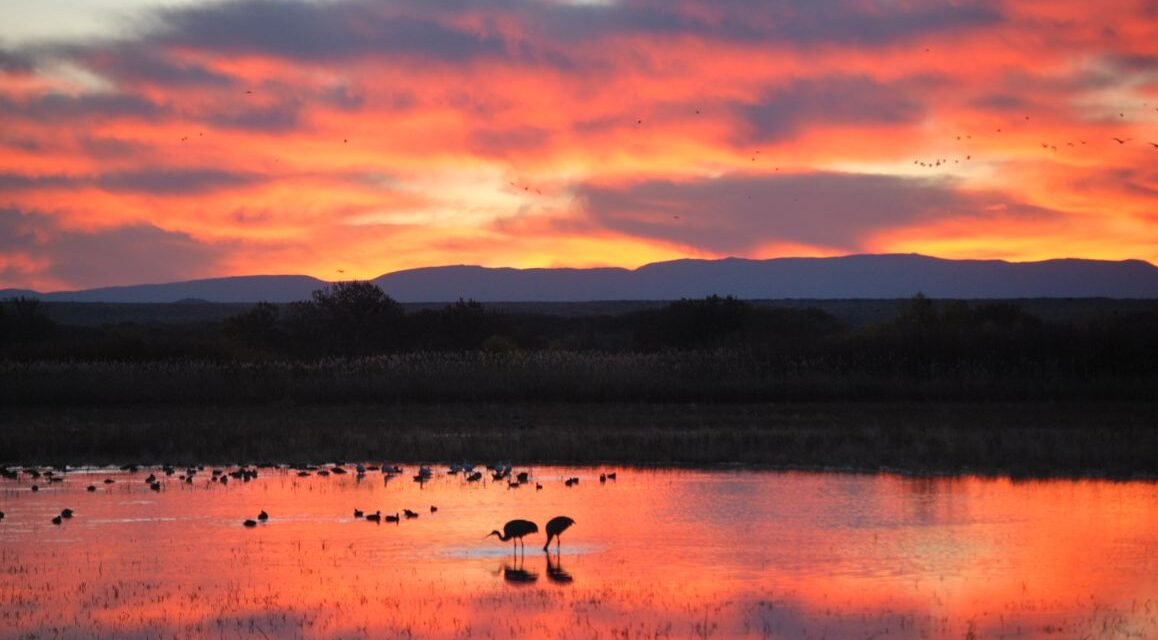
It’s December, and magic is in the air at the Bosque del Apache National Wildlife Refuge in New Mexico. Every winter, like clockwork, flocks of birds migrate to this oasis near the banks of the Rio Grande River. They come from thousands of miles to spend several months at the refuge feeding and replenishing their bodies to prepare for the lengthy journey back to their breeding and nesting grounds.
The Bosque was established to serve as a safe haven for migrating waterfowl. Historically, the Rio Grande provided seasonal wetlands that grew nutritional grains, offering habitat for a variety of species in central and southern New Mexico. This changed, however, once settlers began to tame the wild river with dams and irrigation ditches in order to manage its flow. Consequently, the fertile river floodplains disappeared and with it the wildlife.
Fortunately, there were people who strongly felt that the wildlife and habitats along this portion of the Rio Grande were worth preserving. They enlisted the help of the government and in 1939, President Franklin Roosevelt made the Bosque part of a national system of lands dedicated to wildlife protection.
Today, the 57,000-acre refuge is part of the U.S. Fish & Wildlife Service and administered by the Department of the Interior. The river water is managed to recreate the wetlands of the past and grain crops are grown to meet the needs of the migratory birds.
The Bosque is well-known for the tens of thousands of cranes, geese and ducks, who take up residence here from late October through mid-February. The sandhill cranes and snow geese, in particular, are star attractions.
Snow geese, the majority of which come from Northern Canada, can cruise up to forty miles per hour, even up to seventy if they catch a tailwind. These birds are strong fliers, walkers and swimmers, who forage on foot and sleep while sitting, standing on one leg or swimming. They mate for life and choose a partner of the same color morph (white or blue), as the family in which they were raised.
Migratory sandhill cranes breed in Canada, Alaska, the northern Rockies and Siberia. They are three to four feet tall and possess a wingspan up to six feet. There are, however, smaller sized sub-populations of the species. Once at the refuge, the flocks congregate in open fields to feed during the day, then return to the water to roost at night for safety.
The staff at the Bosque knock over the corn that is grown on the fields with farm equipment, to ensure the cranes have easy access to the food. These birds won’t enter fields of standing corn due to possibly unseen predators. This practice also discourages them, as well as other wildlife, from raiding the different crops grown in the valley that are not intended for them, such as chilies.
Avid birders from around the globe make a pilgrimage to the Bosque during the winter months to view the spectacular exhibit of fowl on parade. Many plan their visit to coincide with the Annual Festival of the Cranes. Typically held in November, the festival offers tours, workshops, socials and other events.
For peak observation, it’s recommended to arrive at the refuge about a half hour before sunrise in order to witness the huge array of roosting birds set out for their day of feasting.
As you wait in the chilly darkness of the desert for the dawn to come, you’ll start to be aware of slight disturbances in the water. You won’t be able to see anything, yet, but you realize the birds are present. And then the honking begins.
The noises increase as the black sky fades to blue and the sun creeps above the horizon. The birds become more active, flapping their wings, and the excitement mounts among the spectators. All of a sudden, the flocks launch en masse, responding to some unified call. Thousands of wings beat with a thunderous pulse that vibrates within your body. You try to capture this explosive and dramatic moment on your camera, but realize you’ll never do it justice because this is more, much more than a visual event. It’s a powerful visceral experience.
Fortunately, you can head back later in the afternoon, about thirty minutes before sunset, to watch these glorious creatures return. And do it all over again the next day.
In addition to viewing the waterfowl celebs, make sure you drive the refuge’s auto tour loop, which takes you close to the grain fields and the marshes. There’s a good chance you’ll spy hawks, eagles, ravens and other birds, along with possibly some animals like mule deer and jackrabbits.






